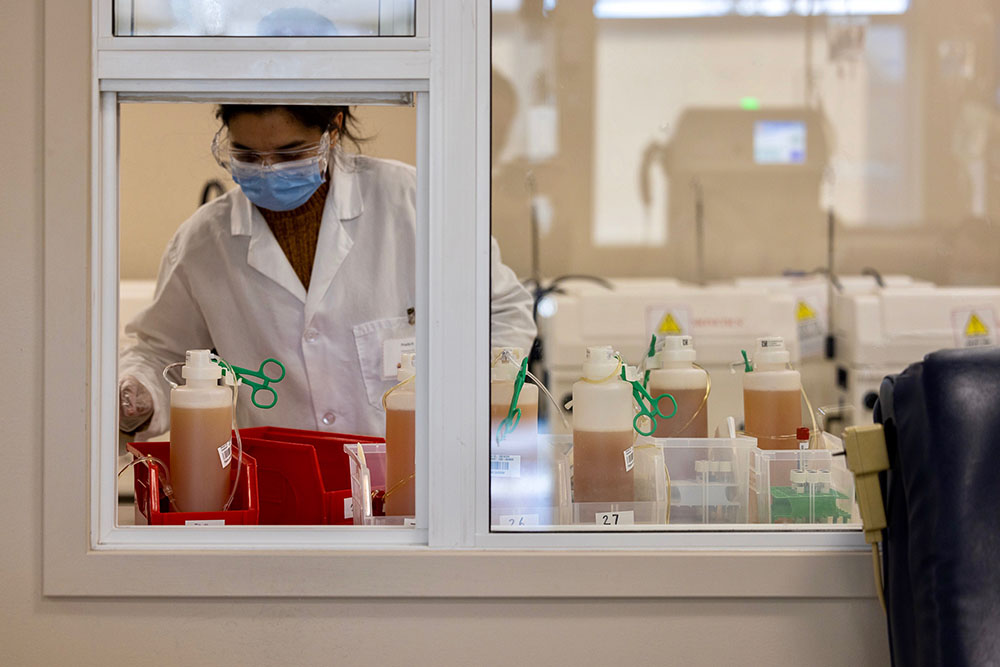What Is Plasma Used For?
February 28, 2022

Plasma is the most abundant component of our blood. It contains specialized proteins that help fight off infections and can be used to create life-saving medicines. These medicines, which are also commonly referred to as plasma protein therapies, treat a host of rare and chronic diseases.
If you’d like to learn more about the conditions plasma is used to treat, keep reading to find out.
What Is Plasma Made Of?
Plasma is a straw-coloured mixture made of water, salts, and proteins. The proteins contained in it include:
- Immunoglobulins
- Alpha-1 proteinase inhibitor
- Clotting factors
- C1 esterase inhibitor
Each of these proteins can be used to create therapies that treat specific diseases.
What Does Plasma Donation Do?
Plasma donation is the process by which the plasma that is used to create life-saving therapies is collected. To collect plasma, donors undergo a process called plasmapheresis, which removes blood from the body, separates out plasma, and returns all other blood components to the body. This type of plasma donation is known as source plasma donation, and it brings in three times more plasma than just removing plasma from a blood donation.
After plasma is collected, it undergoes an extensive manufacturing process that can take anywhere from seven to 12 months to complete. Once plasma has been manufactured into medicinal products, it is then administered to immunocompromised patients.
Who Needs Plasma Therapies?
Plasma protein therapies are used to treat a number of bleeding disorders, autoimmune diseases, and immunodeficiencies. Here are some specific conditions that plasma is used to treat:
1. Primary Immunodeficiency Diseases (PIDDs)
PIDDs are a group of more than 300 diseases that are caused by missing immunoglobulins, also known as antibodies. Antibodies are produced by your immune system in response to foreign invaders and can help prevent illness.
Patients who have a PIDD often have persistent, recurrent infections and are chronically ill as a result. PIDDs can be treated with immunoglobulin replacement therapies.
2. Alpha-1 Antitrypsin Deficiency
This rare genetic disorder is caused by a lack of the protein alpha-1 proteinase inhibitor. Alpha-1 proteinase inhibitor protects your lung tissue from being damaged.
Patients living with alpha-1 antitrypsin deficiency may have chronic emphysema and/or liver damage. Alpha-1 proteinase inhibitor therapies can help manage this condition.
3. Hemophilia
Hemophilia is a bleeding disorder that is caused by missing or mutated clotting factor proteins. It causes recurrent bleeding episodes in the skin, muscles, and/or joints, the latter of which can ultimately lead to crippling joint disease. This disorder can be treated via hormone replacement therapies that are made from clotting factors.
4. Chronic Inflammatory Demyelinating Polyneuropathy (CIDP)
CIDP is a form of chronic autoimmune neuropathy that causes your immune system to attack your nerve coating. This, in turn, impairs the ability of your brain to deliver messages to your body.
Impaired motor function, progressive weakness, and loss of limb function are some of the symptoms patients who have CIDP may experience. Intravenous immunoglobulin therapies can be used to treat this condition.
5. Hereditary Angioedema
Caused by missing or low levels of the C1 esterase inhibitor protein, hereditary angioedema is an inherited disorder that is characterized by persistent and severe swelling. This swelling can be fatal if your airway is obstructed. Plasma-derived products made from the C1-inhibitor protein are effective treatments for hereditary angioedema.
The fact that plasma can be used to treat so many rare diseases is one of the reasons why plasma donation is so important. By donating plasma, you can help improve the lives of patients living with these conditions. Book your next plasma donation appointment today to change someone else’s life for the better.









